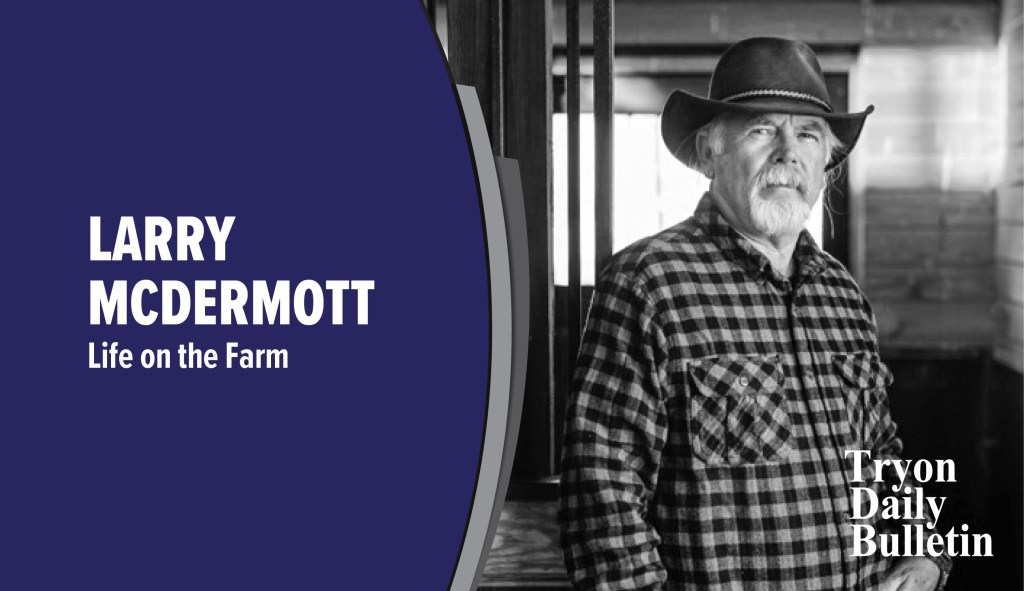Bury a few acorns; trees are our time capsules
Published 1:54 pm Thursday, October 12, 2023
|
Getting your Trinity Audio player ready...
|
It is, yet says nothing.
So wrote Walt Whitman. He was describing a tree he came upon while communing with nature. Laid low by a stroke at 54, he immersed himself in nature and discovered the wonder of trees.
He hadn’t previously paid a lot of attention to trees. They were there. He saw them, but he didn’t really see them until he got close to death’s door.
In a blending of mythology and etymology, Whitman wrote of dryads and hamadryads. Dryads and hamadryads formed different categories of nymphs that were connected with oak trees, some living near them and others living inside the tree.
“Science (or rather half-way science) scoffs at reminiscence of dryad and hamadryad, and of trees speaking. But, if they don’t, they do as well as most speaking, writing, poetry, sermons — or rather they do a great deal better,” he wrote. “Go and sit in a grove of woods, with one or more of those voiceless companions, and read the foregoing, and think.”
As Whitman labored to regain his health, he pushed himself deeper into the woods, and in doing so began to discover how to appreciate the intricacies of trees, all being different but the same, just as we all are.
“Unfolding to my sense, new amazing features of silent, shaggy charm, the solid bark, the expression of harmless impassiveness, with many a bulge and gnarl unreck’d before. In the revealings of such light, such exceptional hour, such mood, one does not wonder at the old story fables, (indeed, why fables?) of people falling into love-sickness with trees, seized ecstatic with the mystic realism of the resistless silent strength in them — strength, which after all is perhaps the last, completist, highest beauty.”
Yep, ole Walt was seeing the light the way many nature lovers have, the way a dedicated woodworker and artisan looks at a certain burl and gets excited.
I think of this now that we all are struggling to walk while fallen acorns cover the ground. We try not to let them turn our shoes into roller skates that send us flying butt over teakettle into the road only to be run over by a giant logging truck.
In his book “The Nature of Oaks,” noted author and entomologist Doug Tallamy, who spoke to a packed auditorium in Polk County earlier this year compliments of The Gardening for Life Project and its partners, told the story of buying 10 acres with just a few trees and deciding in the fall to collect white oak acorns to plant. Years later, he was collecting acorns from what was once a seedling in a flower pot and planting them.
As an aside, 500 oak tree saplings were distributed free of charge to those devoted Tallamy lecture participants.
- J. Watt, a nature and conservation photographer from Victoria, British Columbia, is a “tree hunter.” He explores forests looking for unique trees, and he recently found a prize–a cedar tree 151 feet high and 17.5 feet in diameter. The tree is believed to be more than 1,000 years old, and is one of the largest old-growth cedars ever documented in British Columbia.
With all of this on your thought canvas, try to picture this. Last month, a 16-year-old boy in northern England cut down a famous tree that had stood for nearly 200 years next to the Roman landmark Hadrian’s Wall in Sycamore Gap. If you ever watched the Kevin Costner movie “Robin Hood: Prince of Thieves,” you doubtless saw that tree.
A healthy oak tree will live for 300 years. Angel Oak in Charleston is 1,500 years old.
As we know, a disturbed person can attempt to erase our history, so write some history yourself this fall. Pick up a few of those acorns that are trying to be wheels under your feet and plant them. Not for the tree nymphs but for our children’s children.
Larry McDermott is a local retired farmer/journalist. Reach him at hardscrabblehollow@gmail.com




